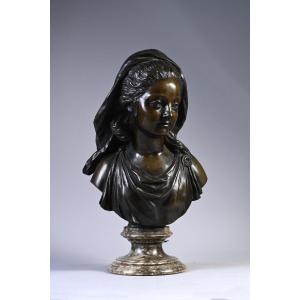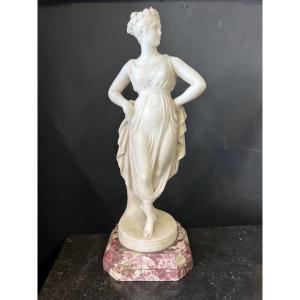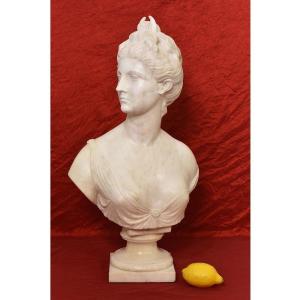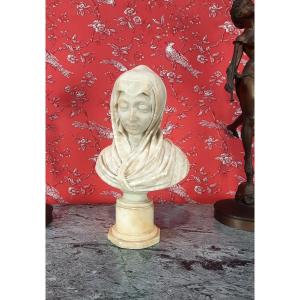Workshop plaster
Late 19th - early 20th century
Beautiful patina of use. A piece of the snake on the side is missing.
H. 54 cm
W. 48 cm
d. 23cm
Medusa (or Gorgon) is a character from Greek mythology, the only mortal of the three Gorgons (Stheno and Euryale). The three Gorgons were born of the sea god of the dangers of the hidden depths, Phorcys, and the goddess of sea monsters and the dangers of the sea, Ceto.
Her eyes have the power to petrify any mortal who meets her gaze. After being decapitated by Perseus, her mask was given to Athena, who attached it to her aegis. The image of Medusa was long used as protection against the evil eye.
The Rondanini Medusa is a Roman copy discovered in the palace of the same name, based on a Greek bronze original attributed to Phidias dating from the 5th century.
In 1786, the Medusa was admired by the philosopher Johann Wolfgang von Goeth, who wrote that "the mere idea that something like this exists in the world, that something like this could have happened, already doubles our existence. I would gladly say something about it, if all that could be said about such a work were not empty noise. The work of art is there for us to see, not to talk about, except at the very most in its presence. On the advice of the philosopher and encouraged by this praise, King Ludwig of Bavaria acquired the sculpture from the Marquis Rondanini for his collection.
























 Le Magazine de PROANTIC
Le Magazine de PROANTIC TRÉSORS Magazine
TRÉSORS Magazine Rivista Artiquariato
Rivista Artiquariato
